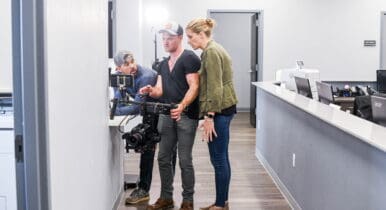3 Lessons From a Fundraising Firm Owner
It’s not easy to make the transition from solo practitioner to business owner. Here’s what we’ve learned about getting the business side right.

Fundraising as a service is notably challenging to do at scale. Individual fundraisers are limited in the number of hours in a day, and in the number of clients that they can serve effectively. Even more challenging is that most fundraisers are excellent at doing all of the work themselves, but have little to no experience in entrepreneurship or running a company.
But with the right mindset, you can scale upwards. Here are some of the key lessons that we’ve learned along the way in building a firm that’s been consistently growing.
You need a playbook.
Any good company has a standard operating procedure (SOP) for how they service clients. For us, that meant having both a written and video guide of how to do everything.
We’ve documented simple tasks such as how clients send thank-you notes to donors (3,046 words), to how we staff & manage fundraisers (5,045 words), to how we staff client call time (4,282 words), and more. It’s shocking how even the most simple tasks require a lot of work to fully document and outline.
Having a playbook will allow you to do the following:
- Quickly train & onboard new team members
- Hold your team accountable to standard operating procedures
- More easily make small adjustments & tweaks to your defined SOPs to improve the quality of your service
- Lastly, it’ll allow you to grow
To implement this, I recommend Loom (for quickly recording videos of the Principal Consultant executing a workflow) and Notion (for being the central hub of your company where all your information is stored). These two web apps in conjunction will allow you to build an operating guide that’ll define how your team members serve clients every day.
Without this, you won’t ever be able to scale beyond a small number of clients. To grow big, you need to standardize everything and have clear procedures that you can delegate to your team and hold them accountable to.
Implement systems and leverage technology.
Within our playbook, we’ve created a number of systems that allow me as a principal consultant to delegate or automate key parts of the business.
Here are some of the systems and processes we’ve had to create:
- A weekly client call time scheduling process
- A process for what to do with returned thank you notes (small but important!)
- Automated client invoices via Zapier & Quickbooks
- A centralized RSVP text & email system for all of our fundraisers
- Daily updating of our pledge & event trackers by our Admin Assistant
- Our own proprietary client CRM and centralized donor database all in Airtable
- Standardized fundraiser and client donor meeting memos
To help manage client communications, I can’t recommend using OpenPhone enough. OpenPhone is an improved version of Google Voice and allows us to have a dedicated work line that we can text clients from. Our clients text us checks, action items, asks for reminders, updates on meetings, and more. Keeping client communication out of your personal phone and onto a centralized line that both you and your staff can manage is crucial. It’s easy to get things lost in your personal texts and as a detail-oriented fundraiser, you can’t afford to miss anything.
Get your pricing right.
Setting appropriate pricing is very hard, especially when first starting off. It remains one of the most challenging learning curves for new consultants.
As a fundraising firm grows, your costs will increase and you’ll need to make sure that you’re charging enough to maintain your ability to serve clients. In the consulting world, reputation is everything. You should always strive to provide the best level of service, and never strive for “what’s good enough.” If you don’t charge enough, then you won’t have enough internal resources to maintain a high level of client services, and also protect your reputation along the way.
To price appropriately, you’ll need to cover your expenses (labor, technology, data, and if needed office space) while maintaining a profit margin in each contract. To map out that margin, create a table that predicts how many hours a week a contract will take to service. Break those hours down into your labor — which you should price very highly — and your staff’s labor, which is priced at their salary and tech costs. After you’ve priced each hour of work, the goal is to aim for a profit margin after your costs are accounted for. Maintaining this is critical for any business, but especially important for fundraisers who are often first-time business owners.
As you continue to operate your firm, you’ll need to invest profits into legal fees (contracts, NDAs, and campaign finance compliance questions), graphic design, tech & automation consulting, data, and more. Expenses that you weren’t predicting will come up, and it’s important to have resources readily available for your firm to grow, expand, and react to new challenges.
It’s also important to separate your income as an employee and your income as a shareholder — these are two separate returns that should be accounted for. Try to derive your salary from the labor you are providing in servicing clients and operating the firm, and then pull your shareholder distributions from the margin on each contract.
When you start accounting for the cost of your own labor, that allows you to eventually delegate that labor to other paid staff as you grow and scale.
Now, it’s difficult to make the plunge from a solo fundraiser to a business owner, but if you do things right you can build a company that serves campaigns year round and sets new fundraising records for clients of all sizes. The need for fundraising professionals to start their own firms has never been greater, and it’s my hope that more of us will take the plunge into entrepreneurship and start innovating an industry that still operates largely on legacy processes. The opportunity is yours and is ripe for the taking.
Kalani Tissot is a political fundraiser and consultant based in Las Vegas, Nevada. Through his firm, Tissot Solutions LLC, Kalani raises money for Democrats in Nevada.

